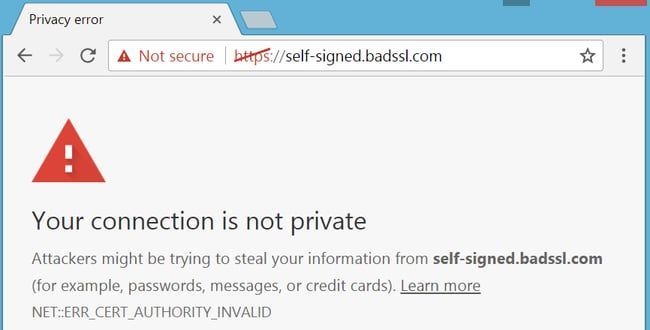Cheryl Anderson
Market research is the first step for B2B website

Market research will be the first step for B2B website marketing and design. The research should include:
- Review the client's business goals.
- Create a Buyer Persona.
- Discover your target market.
- Define your sales funnel.
- Users objective
Here are 11 steps to follow for a successful business-to-business website:
1. Create Clear Brand Messaging
The term "brand" messaging is one of the most essential elements of your client's site. Take the time to create a clear message that resonates with your client's target market.
This includes the following elements:
- Information architecture (IA) - Make it easy for customers to find what they want.
- Headings and subheadings - Make sure all your headings and subheadings are clear and relevant.
- Content - Content should be plentiful and well-written to address your core message.
- CTAs - Your call-to-action (CTA) should be visible but not intrusive. Make sure it is relevant to the page and consistent with your messaging.
2. Stand Out to Customers
The logical next step after developing a strong brand message is to stand out from the competition.
Here are a few tips:
- Buyer personas - Identify buyer personas and tailor your website design that meets their needs.
- Personalization - Personalize the user experience by highlighting solutions, such as new products or services you are offering.
- Customer testimonials - Testimonials show how successful your products or services have been.
- Visual elements - Eye-catching visual elements, such as high-quality images and videos, make your website more engaging.
Your site requires advanced functionality and originality to help your customers find what they're looking for and can support their business goals. The essential purpose of building a new site for B2B is about creating a practical, reliable experience that helps convert website visitors into leads and customers. And the core elements of a standout website are accessibility and simplicity. We dive into more tactics to help brands stand out in one of our exclusive webinars - have a look.
3. Focus on the Right Content Creation
In-depth educational content should be the top priority for a B2B website because it provides immediate and in-depth value to targeted buyers in the sales funnel.
From a web design perspective, these types of content make it easy to link with one another and help prospective buyers find more information that leads them further down the sales funnel. While SEO is still essential, it's secondary or tertiary to delivering immediate value to your target audience.
4. Focus on the User's Purpose
Creating landing pages and content for each type of user and business ensures prospective customers can find the right content that meets their needs, ultimately leading to higher conversions.
Creating separate pages and content for different types of users ensures that users can easily find the information they need, which helps build trust and credibility with their audience. When designing your website, we also consider the rest of your marketing strategies and how you connect with customers in different stages of the buyer's journey. According to the Content Marketing Institute, B2B marketers use social media posts, blog posts, and email newsletters to promote their business, all requiring different landing pages and design elements.
5. UX Matters
User experience (UX) is critical for every website. 91% of B2B customers want a seamless online experience, which means keeping it Simple, natural, and restrained to give your audience the information they need but not overwhelm them with too much extraneous information visually or with written content. White space is one of the most essential elements of a seamless experience. It gives the eye a chance to rest and digest what is next.
In addition, having a straightforward navigation structure, a simple search bar, and dropdown menus ensures customers can easily find what they're looking for.
6. Mobile Friendly
Half of B2B buyers do at least some of their research on mobile devices, and Google's mobile-first indexing algorithm affects how your website is ranked in search engine results.
Ensure you develop a website that looks great on any device, from desktop computers to mobile phones.
7. Personalize Design Elements
But B2B sites can benefit from website personalization by creating personalized design elements through these steps:
- Define user segments
- Gather data
- Create personalized content
- Use dynamic content
- Test (rinse and repeat)
8. Add Chatbots to Improve the User Experience
Chatbots can be a business to business's best friends. For B2B sites, chatbots help qualify leads, move them to different parts of the funnel based on customer segments, and help customers make decisions quickly.
9. Prioritize Website Accessibility
Website accessibility is crucial for B2B clients, as a lack thereof can significantly limit potential partnerships and sales opportunities. Only about 3% of websites are accessible to users with disabilities, and the amount of B2B websites—with all their intricacies and features—is even lower.
10. Optimize the Site for SEO
Search Engine Optimization is a crucial part of any b2b website design. Once you have the design functionality down, you must ensure potential buyers can find your website. Ongoing website SEO will ensure long-term, sustainable growth for your business. We are here to guide you and be a hands-on resource if needed.
11. Highlight Company Credibility
Placing your credibility at the forefront of their website will increase your conversion rates and help you get more value out of the content published.
Here are some methods to consider:
- Customer testimonials
- Case studies
- Certifications and awards
- Partner logos
- Industry associations
- Press and media mentions
- Blogs & Media - Publish insightful blog posts, whitepapers, webinars, or podcasts on industry topics.
- Social Leader - To build trust and credibility, leverage social media platforms to share client success stories, industry news, and updates on your products or services.
- Team expertise - Showcase your team's qualifications, experience, and achievements, emphasizing collective knowledge and skills.
- Client success - Share data on the results your clients have achieved by working with your business, providing tangible evidence of the value you deliver.
FINAL THOUGHTS
B2B web design is highly nuanced, requiring applicability across multiple touchpoints and incorporating specific elements to ensure success. Taking a strategic, data-driven approach to design and website development is important.
By using the techniques listed, you will ensure success, increasing conversion rates and achieving long-term success. Give us a call for your business-to-business website consultation.














